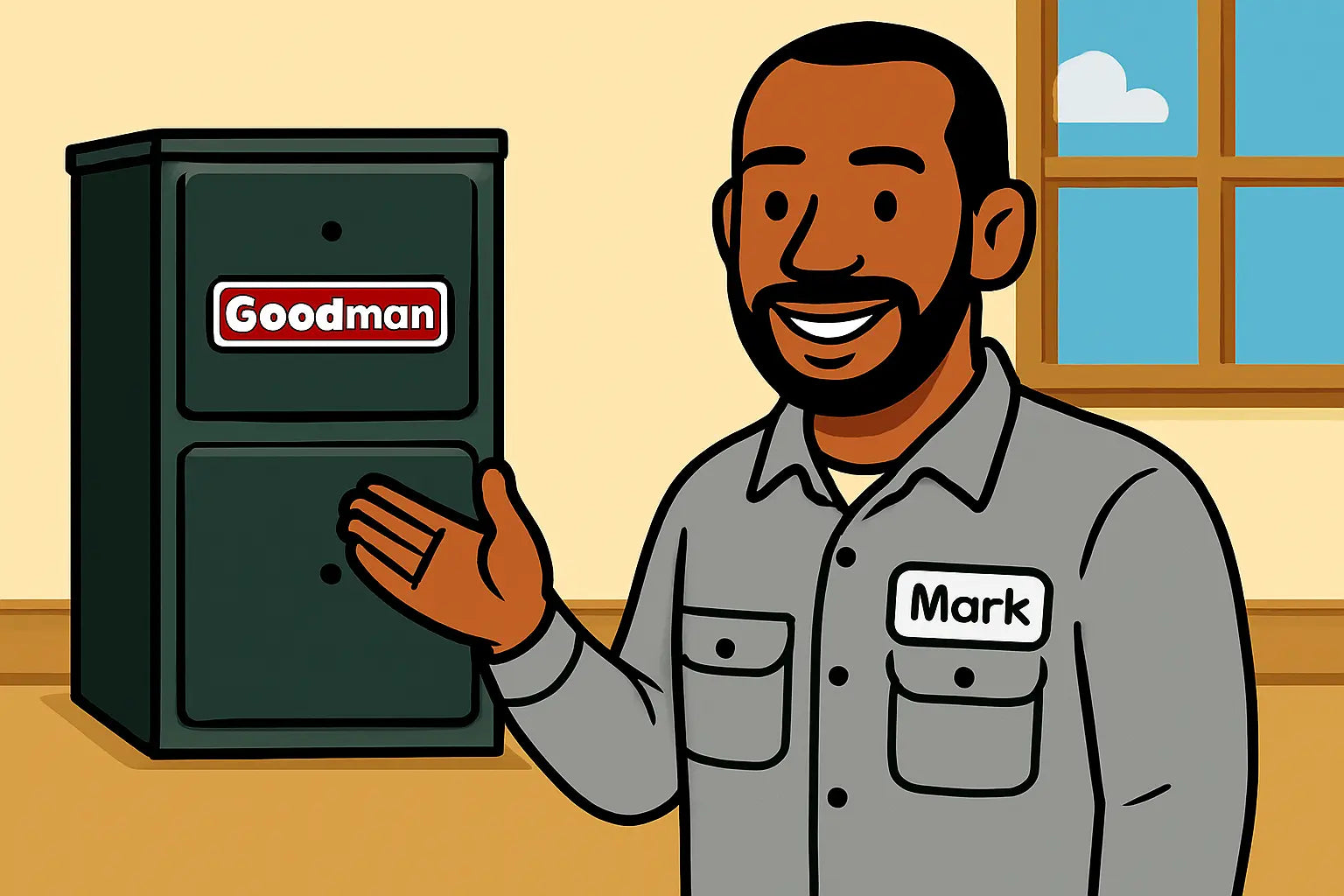Let's Get Started!
Hey friends, Mark here 🔧. Ever stare at your Goodman GR9S960803BN furnace and feel like it’s speaking in some secret blinking code? You’re not alone. Those little LEDs aren’t just decoration—they’re trying to tell you what’s wrong. Today, I’ll teach you how to decode the signals, troubleshoot safely, and fix the most common hiccups. Think of this as a cheat sheet with personality, a little humor, and a lot of Mark-style wisdom. Let’s get to it! 🔥
Section 1: Understanding the Basics of LED Diagnostics
The GR9S960803BN uses its control board LEDs to communicate issues. Here’s the lowdown:
-
1 flash → Lockout / No ignition
-
3 flashes → Pressure switch problem
-
4 flashes → Limit switch tripped
-
6 flashes → Ignition failure
-
7 flashes → Flame detected when none expected
Knowing these codes gives you the upper hand and helps you avoid unnecessary service calls. For a deeper dive into safety standards for troubleshooting, check out NFPA 54 codes.
Section 2: Step-by-Step Troubleshooting Based on LED Codes
2.1 Lockout / No Ignition (1 Flash)
-
Check that gas supply is on
-
Confirm breaker and furnace switch are on
-
Inspect flame sensor and clean if needed (HVAC.com guide on furnace troubleshooting)
2.2 Pressure Switch Problems (3 Flashes)
-
Check vent and intake piping for obstructions
-
Inspect inducer motor operation
-
Ensure proper tubing and connection to the control board
2.3 Limit Switch Tripped (4 Flashes)
-
Indicates overheating; check airflow, filter condition, and ductwork
-
Verify blower speed settings (Energy.gov guide on furnace efficiency)
-
Ensure nothing is blocking return vents
2.4 Ignition Failure (6 Flashes)
-
Inspect ignitor for cracks or wear
-
Confirm gas valve operation
-
Check wiring continuity and secure connections
2.5 Flame Detected When None Expected (7 Flashes)
-
Indicates a safety risk; the furnace may be trying to ignite unexpectedly
-
Shut down power and gas, then call a licensed technician (Better Homes & Gardens: furnace replacement signs)
Section 3: Tools & Safety for Troubleshooting
-
Multimeter for voltage and continuity checks
-
Gas leak detection solution (soap bubble method)
-
Personal protective equipment (gloves, goggles)
-
Always turn off power and gas before inspecting internal components
For more DIY safety tips, check out The Spruce guide to furnace troubleshooting.
Section 4: Troubleshooting Common Symptoms
-
Furnace won’t start → Could be a 1-flash lockout or thermostat issue
-
Furnace short-cycles → Often 4-flash limit switch tripping due to dirty filters or airflow restrictions
-
Strange noises → May indicate blower or inducer motor problems tied to LED diagnostics
-
Gas smell → Immediate shutdown, leave the area, call professional services
Section 5: Tips for Interpreting the Codes Like a Pro
-
Keep a small notebook near your furnace; record each LED pattern and circumstances
-
Cross-reference with the official Goodman manual
-
Don’t ignore intermittent codes—they can indicate early-stage problems
Section 6: When to DIY vs. Call a Technician
DIY is fine for:
-
Cleaning flame sensors
-
Swapping filters
-
Checking vent obstructions
Call a licensed professional for:
-
Gas valve issues
-
Persistent ignition failures
-
Strange flame detection codes
Remember: safety first. One misstep with gas or electricity can turn a small issue into a big one.
Section 7: Maintaining Your Furnace to Prevent Codes
-
Change filters regularly (1–3 months depending on use)
-
Keep ducts clean and clear
-
Annual inspection by a licensed tech to catch early issues
-
Regularly inspect inducer motor, limit switches, and wiring connections
Wrap Up from Mark
And there you have it—your cheat sheet to decoding the GR9S960803BN like a pro. Knowing what those LED blinks mean can save time, prevent damage, and keep your home cozy.
If you’re still on the hunt for this powerhouse furnace, grab the Goodman 96% AFUE 80,000 BTUs GR9S960803BN here.
Curious about placement and orientation for this unit? Visit: Maximizing Efficiency.
Stay safe, stay warm, and remember: a blinking light isn’t a mystery—it’s your furnace talking. Listen closely. 🔧🔥✌️
- Mark, your go-to HVAC guide







